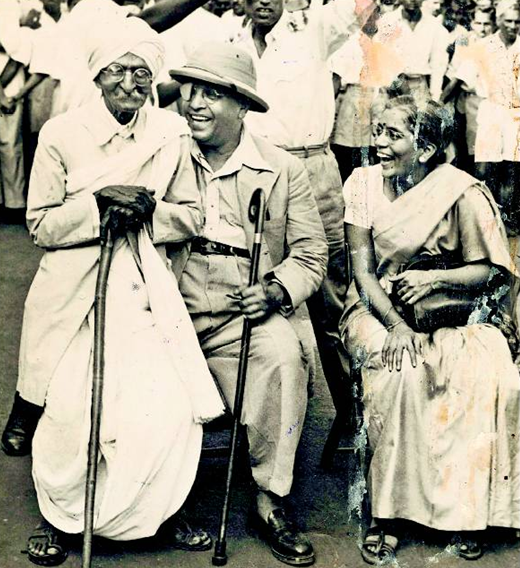The Constitution of India (issues)
(→The Constitution of India: an overview) |
(→How is the Constitution amended?) |
||
| Line 55: | Line 55: | ||
But there is no denying that it has stood the test of time. | But there is no denying that it has stood the test of time. | ||
| − | |||
| − | |||
| − | |||
| − | |||
| − | |||
| − | |||
| − | |||
| − | |||
| − | |||
| − | |||
| − | |||
| − | |||
| − | |||
| − | |||
| − | |||
| − | |||
| − | |||
| − | |||
| − | |||
| − | |||
| − | |||
| − | |||
| − | |||
| − | |||
| − | |||
| − | |||
=See also= | =See also= | ||
Revision as of 16:07, 11 May 2015
This is a collection of articles archived for the excellence of their content. Readers will be able to edit existing articles and post new articles directly |
The Constitution of India
The basic structure doctrine
When Constitution got a judicial shield
40 years ago, the Supreme Court held that Parliament’s power to amend the Constitution did not extend to tampering with its basic structure or framework
Manoj Mitta | TNN
New Delhi: It was the mother of all judgments, delivered in 1973. The largest ever bench, consisting of 13 judges of the Supreme Court, came up with the “basic structure” doctrine in the Kesavananda Bharati case. The verdict was as political as it was legal, prompting the Indira Gandhi government to mount an audacious attack on the independence of the judiciary.
On April 24, 1973, the bench headed by the outgoing Chief Justice of India, S M Sikri, held with a 7-6 majority that Parliament’s power to amend the Constitution did not extend to tampering with its basic structure or framework. The very next day, the government appointed A N Ray as CJI, superseding three of the seven judges who had laid down the basic structure as the line that the Parliament could not cross while amending the Constitution.
For better or for worse, the Kesavananda Bharati judgment thwarted Indira Gandhi’s much-touted socialist policies of serving the collective interest at the expense of individual rights.
Long before the initiation of economic reforms in 1991, Kesavananda Bharati was the most significant triumph for the right, thanks to the exertions of legendary advocate Nani Palkhivala. In fact, it was seen as an instance when the right was on the right side of history.
The basic structure doctrine came on top of three judicial setbacks she had already suffered. While dealing with laws eroding the right to property, which was then a fundamental right, the Golaknath judgment of 1967 ruled that Parliament could not amend any of the fundamental rights guaranteed by the Constitution.
Two years later, the apex court struck down the first-ever nationalization of banks, because of inadequate compensation to the original owners. In 1970, it also invalidated the government’s decision to abolish privy purses, which had been conferred on erstwhile princes at the time of the integration of their states into the country.
If the basic structure doctrine was a path-breaking innovation, the manner in which it was laid down was no less unprecedented. For, 12 of the 13 judges on the bench were equally divided on whether there was any implied limitation in Article 368 on Parliament’s power to amend the Constitution. CJI Sikri, who was on the side of the judges who believed in the implied limitation, tilted the balance by using the ambivalent opinion of the 13th judge, H R Khanna.
Sikri adopted the stratagem of writing a note titled “View by the Majority”, which was endorsed by most of his fellow judges. Khanna came on board as the crucial sentence in that summary about the basic structure was lifted from his opinion.
Thus was born the basic structure doctrine, through an addendum of doubtful legal sanctity.
Though it did not attempt to provide an exhaustive list of the basic features of the Constitution, the Kesavananda Bharati verdict cited illustrative examples: supremacy of the Constitution, republican and democratic form of government, secular character of the Constitution, federal character of the Constitution, mandate to build a welfare state, free and fair elections and unity and integrity of the nation. The premise of the verdict was that an amendment to any of these basic features would amount to abrogation of the Constitution, as it would have changed beyond recognition.
In the event, many of the constitutional amendments made during the Emergency did violate the basic structure and were therefore removed from the Constitution by the Morarji Desai government.
During that infamous phase, the Supreme Court under justice Ray even made an abortive attempt to review the Kesavananda Bharati verdict.
Though the judgment played a historic role in preserving democracy in India, it has its share of critics among legal scholars. They allege that by placing the Constitution above Parliament, the basic structure doctrine was actually anti-democratic.
But there is no denying that it has stood the test of time.
See also
The Constitution of India (articles about) <> The Constitution of India: Amendments<> The Constitution of India: Amendments 1-25<> The Constitution of India: Amendments 26-50<> The Constitution of India: Amendments 51-75<> The Constitution of India: Amendments 76-100
